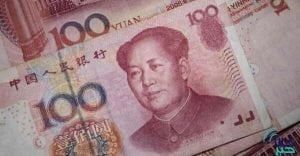Thirty Turkmen Rugs – Masterpieces from the Collection of S. M. Dudin Part III /Tekke & Yomud Weavings
“Merv and Akhal Tekkes are the most frequently encountered (pile products of the Turkomans) at the Central Asian markets.
In quality they are slightly inferior to Salor ones: especially good in this respect are the old pieces, the newer ones are slightly more coarse, mostly because of the rough wool, while in technique they are nearly as fine as the old ones even on occasion being produced on order for small proprietors… From the Salor these pieces differ mostly in lighter overall coloring, which looks somewhat ‘dead’ especially in new items. The main ground color is also dark carmine, but with a reddish tint in old pieces, while in the new ones, on the contrary, it looks slightly cold.”It is known that in the late 19th century Tekke carpets constituted the main mass of Turkoman rugs at the markets of Central Asia and Europe. This situation is demonstrated in the examples of Dudin’s collection: being an admirer of Pendeh (Salor and Saryq) products, Dudin still acquired only 23 of these (State Museuem of Ethnography Collection), while the Tekke items number 37, thus showing the great predominance of Tekke rugs at the bazaars of Samarkand, Bukhara, and Merv which Dudin visited in 1900-1902
 12. TEKKE Turkmen, TORBA
|
 11.: TEKKE Turkmen, ASMALYK
|
| In an early period the Tekkes were an organized conglomerate of different groups of diverse origin. However, by the 18th century they were a monolithic enough tribe that in that period it was possible to recognize, at least in carpet weaving, two distinctly large subdivisions: Akhal and Merv Tekkes. The Akhals preserved more of the traditional characteristics of ancient carpet weaving, while the Merv Tekkes experienced a strong Salor influence and thus adopted such specific Salor features as knot depression and a great repertoire of designs. | Tekke pile weaving is noted for the great variety of items: main carpets, rugs, namazlyks, different sizes of tent bags, and decorations. Especially rich was the wedding caravan’s outfitting — five-sided camel trappings (asmalyks), breast plates (khalyks), knee decorations (dizlyks), belts, and some others. Occasionally one can find special paired rugs for covering the skylight of the yurt and U-shaped rugs to surround the hearth. Tekkes often used door hangings, ensis and kapunuks of different forms, or thresholds, such as germetches. These items are known mostly by specialists, while the tribe’s international fame was achieved for their floor rugs and carpets, (khali) |
 11b.: TEKKE Turkmen, ASMALYK |
| Dudin wrote about the Tekkes as follows: “In some places, to satisfy the increasing demand, they weave carpets all day long. Sometimes this work is done by one employer, who engages the weavers and orders the carpets not only of definite size, but of definite pattern. Still more often carpets are made in the intervals in between the everyday housework of Tekke women. The fame | which Tekke carpets achieved…was gained by them not from any purpose. Actually in evenness of weave, beauty and distinctness of ornamentation — these being closely connected with the regularity of the yarns’ production — and in the richness of color — though not many are used to create the patterns — there are not many carpets which can compete with them not only in Central Asia.” |
 13. TEKKE Turkmen, ASMALYK
|
| Dudin purchased for the Ethnographic Department of the Russian Museum some truly unique Tekke pieces. Among them torba No. 12 is remarkable in exhibiting extremely high craftsmanship. Its knot density range’s from 490-550 per square inch (7,600-8,500 dm2), such density being possible only due to the finest balance of all threads creating the structure of the textile. This torba can be called a masterpiece of carpet weaving for, despite having a high knot density, it is soft in texture and well balanced in composition. This must be noted especially, as the passion for a high knot density was in great favor in the late l9th century and altered greatly the image of Tekke pile weaving. | Usually the carpet weavers increased the knot density mechanically by more intensive beating of the weft and pile with the comb. This naturally led to stiff, tight textiles, which felt like a piece of iron. Lack of flexibility was not the only defect of such rugs. The second and perhaps even worse result was the distortion of the design. The weaving and its pattern became compressed and, to make it the normal size, the weavers had to increase the number of borders. As a consequence in the late l9th-early 20th century there appeared a large number of rugs and bags with a small central field and eleven to thirteen borders instead of the three to five traditional ones. |
 15. TEKKE Turkoman, ASMALYK
|
| Coming back to our superb torba and looking at its fine condition, one must not think that it is a late piece. Turkomans preserved their best rugs and bags for hundreds of years. Dudin wrote about it: “ln none of any other items of housekeeping will you find better durability and better ability for long endurance. Pile textiles in this respect not only surpass all other textiles, | but nearly all other materials including metals… besides they were seen as a kind of accumulated capital… they were collected and preserved as having an immutable value, giving cosiness to the furniture of the yurt and at the same time evidence of the prosperity of the owner.” |

|
| For rather a long time these asmalyks were thought to be made by Yomuds. Dudin in his first attribution (registration of collection in 1902) simply called them Turkmrn, not being sure of the origin of the pieces. Later in his article I think mostly following the current common attribution — he also describes them as Yomud. There was another animal/tree asmalyk in Dudin’s collection, which belonged to the Museum of Ethnography. In the 1930s it was handed over, together with a Salor ensi and some other pieces, to the Ashkabad Museum of Fine Arts, and its | subsequent fate is unknown. It is very possible that the five-sided asmalyk published by A. Felkersam in his previously cited work was actually that piece, as Felkersam used some of the Museum’s objects in his publication. In discussing the Salor group, I referred to the Tekke kapunuk No. 14 with ovdon gyra or curled leaf pattern. It seems that this pattern was the most popular one for decorating door surrounds among the tribes of the former Salor division. Besides the curled leaf, I have only seen the aksu and ak nagysh pattern on kapunuks and mafrashes; both patterns are more characteristic for mafrashes |
 14. TEKKE Turkmen, Kapunuk
|
YOMUD
| “After Krasnovodsk the landscape is soon replaced by a lifeless and sunfaded steppe. To the right there were rather low blue sunburned hills, to the left — in the distance you can see the same endless steppe. There is either loam with spots of low insignificant grey-green, yellow or rust-red grass or moving sands covered with barkhans, sometimes reaching enormous heights and with thickets of haloxylon and tamarisk. Here and there are flashes of a flock of camels or a caravan, a rider in a | shaggy black hat passes, a group of yurts appear, ruins of an old fortress or a group of engraved mazars, — burial mounds — and again flat steppe and steppe without edge or end. Only at the places where the nearest mountains give water and nomadic tribes settle or Russian colonists made their homes, do you see by the side of the road gardens and fields watered by irrigational aryks. But the oasis ends. And it ends where the last drop of water goes under the ground and again the same terrifying wild steppe.” |
 16. YOMUD Turkoman, TORBA
|
| This was the territory where the Yomuds, another large Turkoman tribe, lived and this was what Dudin saw after he crossed the Caspian Sea: the land on which Turkomans lived for hundreds of years, which created the world of the Turkoman rug. Dudin could not study Yomud carpet weaving at this place at the time of the year. He arrived as the tribe was migrating to summer pastures, and there was no opportunity to follow them. The only source of rugs were the bazaars of Samarkand and Merv, neither very rich in Yomud production. So Dudin’s impressions of this group is illustrated only by what was available in the Ferghana Valley. | “Yomud carpets are rarely met at the markets in comparison to Merv or Akhal Tekkes; most are small pieces, often camel trappings for weddings, asmalyks, mafrashes, ensis, kapunuks and lastly the runners, yolami. “In coloring, mainly by common tint and decoration, all articles usually called Yomud can be divided into several groups. They include products of the Goklan, Chodor, Ogurjali and so on, and undoubtedly it would be possible to find distinctive features at least for the most typical objects of these groups if there were a richer variety of material, at least partly more or less correctly dated.” |
 YOMUD Turkmen ASMALYK
|
| These two citations from Dudin’s article are evidence of the state of knowledge of Yomud carpet weaving at the eve of the century. Dudin, like most scholars, could not visit the Yomuds, had no real information on the nature of their weaving, nor their trade contacts with Iran and the Caucasus. In reality the Yomuds produced a great number of carpets, mostly in large dimension,or sale. But their markets were not Samarkand or Bukhara, but the trade centers of the Caucasus and Transcaucasus. It is known, for example, that it was a question of prestige for Azerbaijanis to have Turkoman — or as they were called “velvet” — carpets in the dowry. | Of the Chodors, he bought two carpet fragments and the upper part of a kapunuk, 17 It is interesting that designs of the torbas and kapunuks represented in the collection have one characteristic feature which is also traditional for the whole range of Turkomans patterns. This is the alaja outlines for the contour of the central part of the ovdan gyra figures. Analogous outlines can be found in torbas and kapunuks decorated with octagons with fantastic creatures in the center18; this range can be seen in similar outlines of Ersari gul-i-gols. Such elements, being of secondary significance, show the existence of a common origins for the design used by all these tribes and groups. |
| Notes by Elena Tsareva 16. About this type of article, see Pinner, R. and Franses, M., “The Bird and Animal Tree Asmalyk,” pp. 114-I33, Turkoman Studies I, Oguz Press, London. 1980. l7. see Tschebull, R., “Chodor Carpets with the Tauk Nuska Gol and a Related Example,” Hali, Vol. 3, No. 2, pp. 91-94. l8 . see Mackie/Thompson, Turkmen, p. 138; Dzumaniyazova, op. cit. |
| Copyright 1989 by Elena Tsareva. Original text and photographs appeared in Oriental Rug Review, With much thanks, this article was reproduced with permission by Ron O’Callaghan and Elena Tsareva No parts of this text nor the photos may be reproduced in any form without permission from Ron O’Callaghan, Elena Tsareva or myself |
Originally appeared in Oriental Rug Review, Vol. 11, #1
If you want buy carpets from Iran you can contact us for talking about it.
whatsapp: +989129726343
telegram: @omidahmadyani
phone: +989129726343
phone: +982128421193
Email : omid.ahmadyani@Outlook.com





